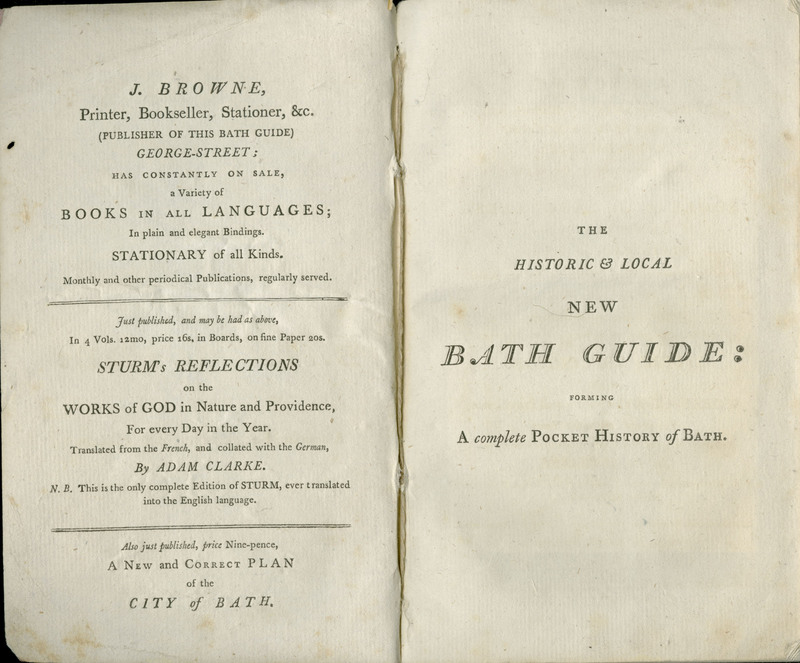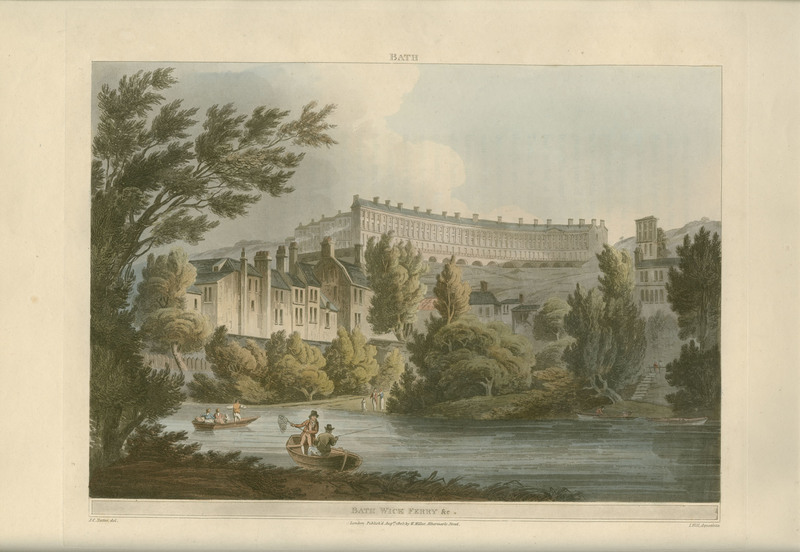Bath
The Historic and Local New Bath Guide: Informing and Useful to Travelers, and those who visit and reside in this ancient city is a compact volume, small enough to be carried around the city with its owner potentially. Bath was a popular vacation spot during the end of the eighteenth century and early nineteenth century, known for its curative water. Bath was also seen as a prominent social scene. Public assemblies were the highlight of Bath socializing, with activities like dancing and chatting. Jane Austen’s first trip to Bath in 1797 was to visit her aunt and uncle, the Leigh‐Perrots. Jane loathed her first time in Bath as she thought the town was dirty and the weather was awful. A few years later she returned with her brother Edward and decided it really was quite tolerable. Jane Austen and her family later lived there from 1801 to 1806, perhaps using a similar guide to acquaint themselves with their new home. An anecdote notes that she fainted when she discovered that the family was going to move to Bath. Austen’s family lived near Sydney Gardens at No. 4 Sydney Place. Austen frequently spent her mornings at the public breakfasts in Sydney Gardens and enjoyed roaming around the Pump Room in her best dress.
(Julia Grant, Brooke Pennell)
John Claude Nattes captures the essence of picturesque city life in a selection of topographical paintings entitled Bath: Illustrated by a Series of Views. The collection depicts several landmarks that Jane Austen herself visited and wrote about. As scholar Jean Freeman highlights, “No admirer of Jane Austen and her works should be without some knowledge of the city of Bath and of the considerable part it played in her life.” Referenced in all of her novels, and the central setting of two, Bath indubitably influenced Austen’s life and work.
The city of Bath was named after its hot springs and became famous for its pump rooms. In these rooms, British elite would gather to socialize and drink the water, which was believed to have restorative properties. Jane Austen includes several descriptions of pump rooms in both Northanger Abbey and Persuasion. However, while the city is portrayed favorably in the former, the city’s description becomes decisively more negative in the latter, written thirteen years later. This shift in attitude reflects events in Jane Austen’s personal life that soured her perception of the city and influenced her attitude toward it in her writing.
(Emma Furlong, Trevor de Sibour)

Army and Navy



